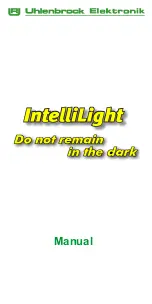
30
MDS 1710A/C and MDS 2710A/C/D
MDS 05-3447A01, Rev. F
TOT [1-255, ON, OFF]
This command sets or displays the transmitter Time-out Timer value
(1–255 seconds), as well as the timer status (
ON
or
OFF
). If the timer is
on, and the radio remains keyed for a longer duration than the
TOT
value,
the transmitter is automatically unkeyed.
When this happens, the radio must be commanded back to an unkeyed
state before a new keying command is accepted. The default timer value
is 30 seconds.
TX [xxx.xxxxx]
This command selects or displays the radio’s transmit frequency in
MHz. The frequency step size is 6.25 kHz for the MDS 2710A/C and
5.0 kHz for the MDS 2710D.
If the customer frequency has not been programmed at the factory, a
default frequency will be programmed in the radio near the center of the
frequency band.
UNIT [10000...65000]
This command selects or displays the radio’s unit address. The factory
default setting is the last four digits of the transceiver’s serial number.
The unit address is used in network diagnostics. See MDS’ Net-
work-Wide Diagnostics System Handbook (MDS P/N 05-3467A01) for
more information.
6.0 TROUBLESHOOTING
Successful troubleshooting of the radio system is not difficult, but it
requires a logical approach. It is best to begin troubleshooting at the
master station, as the rest of the system depends on the master for
polling commands. If the master station has problems, the operation of
the entire network can be compromised.
It is good practice to start by checking the simple things. For proper
operation, all radios in the network must meet these basic requirements:
• Adequate and stable primary power. The radio contains an inter-
nal self-resetting fuse (4A). Remove and re-apply primary power
to reset.
• Secure connections (RF, data and power)
• An efficient and properly aligned antenna system with a good
received signal strength (at least –90 dBm). It is possible for a
system to operate with weaker signals, but reliability will be
degraded.
• Proper programming of the transceiver’s operating parameters
(see
Section 5.0, TRANSCEIVER PROGRAMMING
).
MDS 05-3447A01, Rev. F
MDS 1710A/C and MDS 2710A/C/D
11
3.2 Transceiver Mounting
Figure 6
shows the mounting dimensions of the transceiver.
Invisible place holder
Figure 6. Transceiver Mounting Dimensions
3.3 Antennas and Feedlines
Antennas
The transceiver can be used with a number of antennas. The exact style
depends on the physical size and layout of the radio system. A direc-
tional Yagi (
Figure 7
) or corner reflector antenna is generally recom-
mended at remote sites to minimize interference to and from other users.
Antennas of this type are available from several manufacturers.
8.5"
216 mm
1.
75"
4.
44 C
M
6.63"
168 mm
2.75"
70 mm
7.25"
184 mm
ALTERNATE
POSITION
5.625"
143 mm
2.25"
57 mm
2.0"
50 mm










































